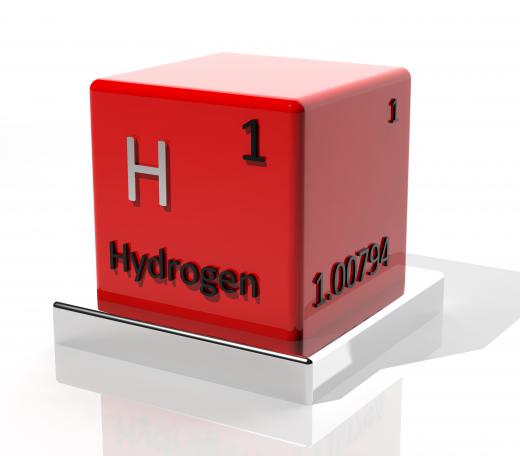What is Hydrogen Burning?
 Michael Anissimov
Michael Anissimov
Hydrogen burning is a process that takes place in every star, whereby hydrogen nuclei are fused into helium at high temperatures and pressures. It is the most common type of process known as stellar nucleosynthesis. After the Big Bang, the universe consisted of approximately 75% hydrogen and 25% helium. Today, the proportions are not all that different, but there are new elements — the universe is about 74% hydrogen, 24% helium, and 2% other elements. These other elements, the most common being oxygen (1%), carbon (.4%), neon (.1%), iron (.1%) and nitrogen (.1%) are all products of stellar nucleosynthesis — the synthesis of heavier elements in stellar cores. Elements heavier than iron are created in supernovae.
Star formation occurs in dense gas clouds in interstellar space. These are called H II regions or stellar nurseries. Eventually, a high concentration of mass appears in an area around the size of our solar system. This is called a Bok globule. When the temperature and pressure in its center reaches a certain level (about 10 million degrees Kelvin), hydrogen ignition occurs, and vast amounts of heat and light are produced. This is the birth of a star.

When a star is engaging in hydrogen burning, it is said to be on the main sequence, and is called a dwarf star. Our Sun is a yellow dwarf. Main sequence stars are the most common stars in the universe, primarily because of the length of time it takes for hydrogen burning to take place. Only a tiny percentage of the nuclei in the stellar core are fused into helium per year. If hydrogen burned quickly, most of the hydrogen in the universe would have already been consumed by nuclear reactions, and converted into heavier elements, making the formation of water (H2O) — and therefore life — difficult if not impossible.
The way a star evolves after its formation depends on its mass. The more massive the star, the more quickly it burns its fuel. In the most massive stars, hydrogen burning is mostly completed after only a few million years, and the next step — helium burning, begins. In stars like our Sun, the hydrogen burning stage is expected to last nine billion years. In stars with a tenth of the Sun's mass, the hydrogen burning may last as long as a trillion years! Such stars are significantly cooler than our Sun.
AS FEATURED ON:
AS FEATURED ON:











Discuss this Article
Post your comments